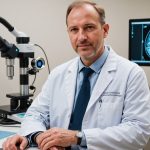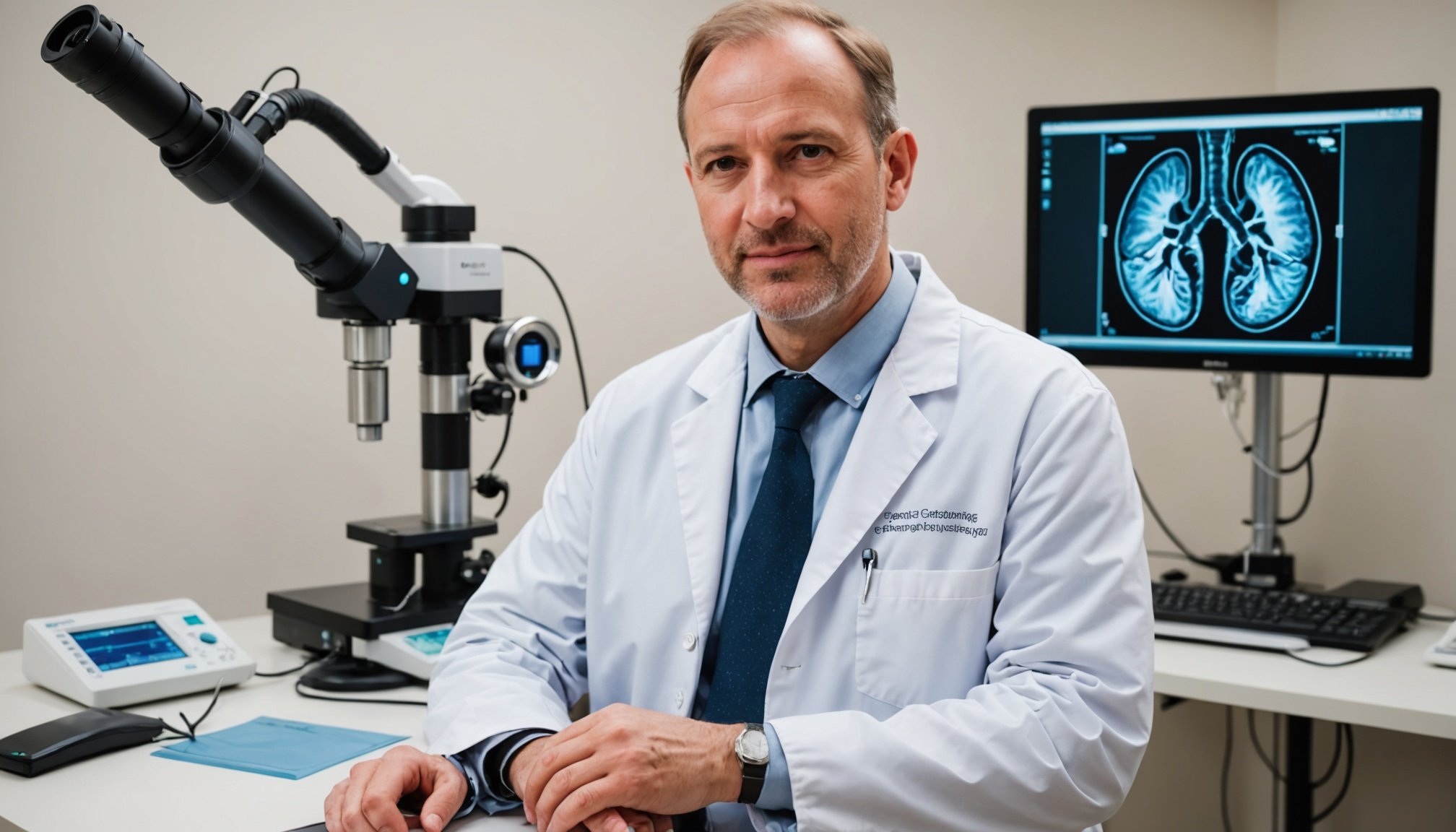Overview of Endoscopic Innovations in Gastroenterology
Endoscopic technologies have revolutionised gastroenterology, offering minimally invasive solutions for diagnosis and treatment. These technologies utilise flexible tubes equipped with cameras and tools to explore the gastrointestinal tract. Such procedures include colonoscopy and gastroscopy, allowing physicians to directly visualise and treat abnormalities.
Recent advancements have significantly augmented these capabilities. High-definition imaging and narrow-band imaging improve the visualisation of suspicious areas, enhancing early gastrointestinal cancer detection. Capsule endoscopy, where a patient ingests a small camera, further extends diagnostic capabilities, especially useful for examining the small intestine.
Additional reading : Unlocking Early Diagnosis: The Role of Advanced Imaging Techniques in Identifying Multiple System Atrophy for UK Neurologists
Innovations in therapeutic procedures also play a crucial role. Technologies like endoscopic ultrasound provide insights beyond just the lumen of the gastrointestinal tract, facilitating tissue sampling. Techniques like endoscopic mucosal resection and endoscopic submucosal dissection allow for the removal of precancerous lesions without resorting to invasive surgery.
Importantly, these technologies are vital for cancer management. Early detection of cancerous and precancerous conditions through advanced endoscopy improves patient survival rates. Implementing these medical advancements translates to more accurate diagnoses and targeted treatments. As endoscopic technologies continue to evolve, they not only shape the future of effective gastroenterological practice but also enhance patient outcomes through less invasive procedures and early disease detection.
Have you seen this : Strategies for UK Pediatricians to Combat Vitamin D Deficiency in Exclusively Breastfed Infants
Efficacy of Endoscopic Innovations for Cancer Detection
The efficacy of endoscopic innovations in cancer detection has been remarkable, bringing a new dimension to medical diagnostics. Advances in endoscopic techniques have significantly enhanced the diagnostic accuracy of cancer detection, allowing for early identification and treatment. Compared to traditional methods, these novel techniques show a noticeable improvement in precision.
Traditional endoscopic methods often faced limitations in visibility and the ability to detect early-stage cancers, which could affect the overall outcome. However, modern endoscopic technologies incorporate high-definition imaging and advanced optical enhancements, resulting in improved detection rates. For instance, endoscopic ultrasound (EUS) and confocal laser endomicroscopy provide detailed imaging that increases the likelihood of identifying malignancies.
Clinical data backs up these claims with supporting evidence. Studies have demonstrated that innovative endoscopic methods identify cancerous tissue more reliably than traditional approaches. Reports show enhanced sensitivity and specificity, leading to better patient management and decreased need for exploratory surgeries. These findings indicate a positive trend towards adopting new techniques in clinical settings.
Ultimately, these innovations not only improve diagnostic accuracy but also promise to enhance patient outcomes, reduce costs, and optimise treatment plans. As the field continues to evolve, the potential for endoscopic technologies to revolutionise cancer detection becomes increasingly apparent.
Case Studies Demonstrating Success
In recent years, clinical case studies have provided valuable insights into the real-world applications and successful outcomes of advanced endoscopic techniques for disease detection and treatment. One notable case study highlighted the early detection of gastrointestinal cancers in patients, significantly improving prognosis and survival rates. These studies showcase how innovative methods can transform patient care.
A prime example from the UK involves a clinical trial where an endoscopic tool enabled doctors to identify precancerous lesions that traditional methods might have missed. The implementation of this technology led to successful removal of these lesions, drastically reducing the need for invasive surgeries later on. Such outcomes demonstrate the potential of these tools to improve quality of life and decrease healthcare costs.
Moreover, real-world applications have underscored the importance of endoscopic techniques in other areas, such as diagnosing digestive disorders where non-invasive methods allow for quicker and more accurate assessment without requiring extensive preparatory procedures. By analyzing these successful outcomes, healthcare practitioners continue to refine their strategies, leading to broader adoption and enhancement in patient management.
These case studies and insights from clinical trials represent a tipping point for medical professionals, highlighting the benefits and practicality of embracing cutting-edge technologies to not only enhance patient outcomes but also streamline healthcare delivery.
Expert Opinions and Recommendations
Gastroenterology specialists are continuously seeking innovative solutions to enhance diagnostics and patient care. Expert opinions highlight the critical role of modern technologies and their transformative impact on gastroenterology. Leading gastroenterologists emphasize the importance of integrating these technologies into everyday practice. According to a panel of specialists, the use of machine learning and AI-driven diagnostics is expected to increase precision in identifying gastrointestinal disorders.
Professional guidelines recommend that gastroenterologists incorporate these innovations incrementally, allowing for a smoother transition and adaptation within clinical settings. They suggest starting with tools that integrate seamlessly with existing systems to minimize disruptions.
Moreover, perspectives on training and education reveal a growing need for comprehensive programs. These programs should focus on equipping professionals with the skills necessary to operate advanced diagnostic tools effectively. Gastroenterology specialists believe that continuous education is vital to keep pace with technological advancements.
Investing in training can lead to better patient outcomes and streamline processes within healthcare facilities. By following these expert recommendations and guidelines, professionals in the field can leverage innovations to provide more precise and efficient care.
Enhancing education and supporting the adoption of cutting-edge technologies will ultimately shape the future of gastroenterology, ensuring that specialists remain well-prepared to tackle emerging challenges.
Guidelines for Implementation in Clinical Practice
Introducing clinical practice guidelines can enhance the integration of new technologies, like endoscopic innovations, within healthcare settings. Here’s a step-by-step guide to ensure a seamless adoption process.
Firstly, a thorough assessment of the specific needs of the healthcare facility is crucial. This involves understanding how the new technology aligns with existing procedures and identifying any gaps in service delivery. Implementation strategies should prioritize training sessions for healthcare providers to ensure they are proficient in operating new endoscopic tools. This not only boosts confidence but also enhances the efficacy of patient care.
Healthcare providers need to consider various factors when adopting these innovations. Cost implications, time for training, and potential disruptions to existing workflows must be carefully evaluated. Being proactive in addressing these considerations can prevent future setbacks.
Nevertheless, integration might face barriers such as resistance to change or technological constraints. Solutions include:
- Developing a timeline for gradual implementation to manage resources effectively.
- Engaging all levels of staff in discussions to minimize resistance and foster a supportive atmosphere.
- Securing stakeholder buy-in by highlighting the long-term benefits of these technologies.
By focusing on these well-planned implementation strategies, clinical settings can successfully integrate endoscopic innovations, ultimately leading to enriched health care delivery systems.
Impact on Patient Outcomes in the UK Healthcare Context
The potential for improved patient outcomes in the UK is significant, especially with advancements in gastroenterology. Early detection of conditions can drastically enhance patient survival rates. Precision in identifying issues at earlier stages often means that patients receive timely interventions, crucial for successful recovery or management. In the context of UK healthcare, this translates into a broader healthcare impact, potentially alleviating the pressures on the NHS.
Innovations in patient care pathways are reshaping how practitioners approach gastroenterology. New technologies offer more refined diagnostic tools, leading to more effective treatment plans. By efficiently categorizing patient needs and streamlining care processes, there is an opportunity to optimize resource allocation throughout hospitals.
Furthermore, advanced detection methods don’t just stop at improving clinical outcomes. They also elevate patient satisfaction levels. When patients experience efficient service and feel informed about their care, they’re more likely to engage positively with the healthcare system. This enhances the overall healthcare quality in the UK.
The integration of innovative detection technologies into everyday practice is leading to an evolving landscape where healthcare professionals can focus more on individualised patient care. This creates a win-win scenario—patients benefit from better treatment, while the healthcare system becomes more robust and can focus resources where they’re needed most.











